The question surrounding the future of the Australian auto manufacturing industry may continue to be asked, however, as far as we’re concerned, there’s now no question in regards to the high standard of vehicles that we produce. The 2014 Holden VF Commodore, which has just been launched, is conclusive evidence that we can produce vehicles at and in some cases beyond international standards.
The VF is by far Australia’s most refined, dynamically complete, safest, and most thoroughly engineered vehicle ever, proving to the Europeans, the Japanese, and the Americans that when it comes to large cars, we have the heritage to get it done properly. When you take into consideration the low prices Holden is asking for the new range, there’s simply no competition that comes close.
The VF Commodore has been a long, gruelling, but always fanatical engineering project since it commenced in 2008. Don’t take it from us though, this is what the dozen or so engineers told us during the official VF Commodore launch in Canberra. The launch involved various in-depth workshops, giving media privileged access and insight into the development of the VF.
The VF is not only a big product for Holden, it’s also big for the local industry. With the recent news of Ford Australia closing down in 2016 and the subsequent demise of the Falcon, the future of the local auto manufacturing sectors could very well rest on the VF’s shoulders in terms of how well it sells.
Although the new icon is not an all-new model, it is fair to say it is as near as. Up to 70 per cent of the chassis tune and underpinnings have been either completely revised or replaced with new components. Most of the components in between the front wheels, apart from the engines, have been drastically redeveloped.
The body, which shares the same shape doors and roof as the VE, now features an aluminium bonnet and boot lid to help fight against fuel consumption – a first ever for any General Motors sedan.
Even though the torso of the VF shares its design with the VE, the structure behind it and the materials used to build it have changed. There are now higher tensile steels used in the A-pillars and frontal roof line to increase roll-over safety. A lot of mass has also been pulled from the front end and put back into more important areas such as the rear bulkhead behind the rear seats and in the B-pillars, both of which offer increased safety. A new aluminium dash instrument panel (IP) beam contributes further to weight reduction and increases body stiffness.
As for specifics, the new alumimium bonnet weight has dropped from the previous steel 17.2kg mass down to 9.2kg. The IP beam which used to be steel and now aluminium has gone from 9.2kg to 6.2kg, and 3.8kg has been saved at each front corner thanks to new aluminium knuckles within the suspension.
So what? You might say. Well, changes such as the new bonnet and boot lid, and various other major updates, help to reduce the Commodore’s overall weight and in some cases the unsprung mass. This brings added performance to the table.
Usually a touchy subject in the auto industry, Holden has opted to go for a new electric power steering arrangement. The rack features a linear gearing ratio, as opposed to the variable hydraulic power unit seen on the VE, providing a slightly more direct feel just off centre, according to Holden. The changes help to reduce fuel consumption by as much as 0.2L/100km, which is quite a margin.
All in all, the VF is 70kg lighter compared with the VE, however, 30kg of added equipment means the total weight saving is 43kg. This contributes to a whole string of desirable benefits; braking, handling, fuel economy, reliability and longevity of moving parts, and overall performance is all improved by varying degrees. In other words, the evolution that has taken place is extremely impressive, even by international standards. When you think about those price cuts Holden has put in place though, it becomes a truly unbelievable achievement.
Interested in getting a discount on a Holden VF Commodore? Click here to get a quote with PerformanceDrive’s fleet buying partners. It’s quick and very easy.
2014 Holden VF Commodore – THE SPECIFICATIONS
Holden VF Commodore Evoke
[column width=”47%” padding=”6%”]Engine: 3.0-litre V6 with SIDI
Output: 185kW@6700rpm / 290Nm@2600rpm
Transmission: Six-speed auto
Drive type: Rear-wheel drive
Wheels: F: 7.0×16, 225/60 R: 7.0×16, 225/60
ANCAP: Five stars
Kerb weight: 1622kg[/column] [column width=”47%” padding=”0″]Power-to-weight: 8.7:1 (kg:kw)
Official fuel economy: 8.3L/100km
Economy during test: 9.0L/100km
Fuel capacity/Type: 71L/91 RON
Power efficiency: 22.2kW:L/100km
0-100km/h as tested: N/A
Priced from: $34,990[/column][end_columns]
Holden VF Commodore SV6 Ute
[column width=”47%” padding=”6%”]Engine: 3.6-litre V6 with SIDI
Output: 210kW@6700rpm / 350Nm@2800rpm
Transmission: Six-speed manual
Drive type: Rear-wheel drive, LSD
Wheels: F: 8.0×18, 245/45 R: 8.0×18, 245/45
ANCAP: Five stars
Kerb weight: 1680kg[/column] [column width=”47%” padding=”0″]Power-to-weight: 8.0:1 (kg:kw)
Official fuel economy: 9.0L/100km
Economy during test: N/A
Fuel capacity/Type: 71L/91 RON
Power efficiency: 23.3kW:L/100km
0-100km/h as tested: 5.9 seconds
Priced from: $32,990[/column][end_columns]
Holden VF Calais V6
[column width=”47%” padding=”6%”]Engine: 3.6-litre V6 with SIDI
Output: 210kW@6700rpm / 350Nm@2800rpm
Transmission: Six-speed auto
Drive type: Rear-wheel drive
Wheels: F: 8.0×18, 235/50 R: 8.0×18, 235/50
ANCAP: Five stars
Kerb weight: 1702kg[/column] [column width=”47%” padding=”0″]Power-to-weight: 8.1:1 (kg:kw)
Official fuel economy: 9.0L/100km
Economy during test: N/A
Fuel capacity/Type: 71L/91 RON
Power efficiency: 23.3kW:L/100km
0-100km/h as tested: N/A
Priced from: $39,990[/column][end_columns]
Holden VF Commodore SS (manual)
[column width=”47%” padding=”6%”]Engine: 6.0-litre V8 (auto with AFM)
Output: 270kW@5600rpm / 530Nm@4400rpm (auto 260kW/517Nm)
Transmission: Six-speed manual
Drive type: Rear-wheel drive, LSD
Wheels: F: 8.0×18, 245/45 R: 8.0×18, 245/45
ANCAP: Five stars
Kerb weight: 1729kg[/column] [column width=”47%” padding=”0″]Power-to-weight: 6.4:1 (kg:kw)
Official fuel economy: 11.5L/100km
Economy during test: N/A
Fuel capacity/Type: 71L/91 RON
Power efficiency: 23.4kW:L/100km
0-100km/h as tested: 5.1 seconds
Priced from: $41,990[/column][end_columns]
Holden VF Commodore SS V Redline (manual)
[column width=”47%” padding=”6%”]Engine: 6.0-litre V8 (auto with AFM)
Output: 270kW@5600rpm / 530Nm@4400rpm (auto 260kW/517Nm)
Transmission: Six-speed manual
Drive type: Rear-wheel drive, LSD
Wheels: F: 8.5×19, 245/40 R: 9.0×19, 275/35
ANCAP: Five stars
Kerb weight: 1766kg[/column] [column width=”47%” padding=”0″]Power-to-weight: 6.5:1 (kg:kw)
Official fuel economy: 11.8L/100km
Economy during test: N/A
Fuel capacity/Type: 71L/91 RON
Power efficiency: 22.8kW:L/100km
0-100km/h as tested: 4.8 seconds
Priced from: $51,490[/column][end_columns]
2014 Holden VF Commodore – THE PACKAGE
From an engineering point of view, no other Commodore has had to surpass so many different engineering parameters, with each having to integrate with the next. For example, the SS V Redline features a staggered tyre size with 275mm on the rear and 245mm on the front. This wasn’t a simple case of throwing wider tyres on the back though. Holden says it had to fine tune the widths and tyre tread type not only for the optimum handling balance, but also so it was balanced with the rest of the car. This includes endless testing and recalibrations of the suspension tune (dampers and springs), the electronic steering tune, and the ride and comfort variables.
As a result, Holden says the VF is without question a lot quicker around its Lang Lang proving ground compared with the VE. The VF wasn’t only tested in Australian conditions either, it was put through its paces under extreme conditions all around the world, including at the following places:
- Holden Engineering Centre, Melbourne, Victoria, Australia
- Holden Proving Ground, Lang Lang, Victoria, Australia
- Desert Proving Ground, Yuma, Arizona – powertrain and altitude testing
- Kapaskasing, Canada – cold weather durability testing
- GM Proving Ground, Milford, Michigan
- Computer Aided Engineering facility, Bangalore, India
- Airbag test facility, Valladolid, Spain
- Idiada, Spain – Fuel economy testing, vehicle coast down
- Winter Test facility, Arjeplog, Sweden – winter testing, stability control development
- Nurburgring, Germany
Some of the technology for the VF stems from the initial development of the modern Camaro – a car which was engineered in Australia – and then re-honed and redeveloped for the VF. The V8 models now feature two different diametre axle shafts to mimimise axle tramp/pop during hard acceleration. This sort of attention to detail has never been used on a Commodore before, and as you can see for yourself in the videos below, the changes forge significant steps in the performance of the SS models.
As for the in-car creature comforts and safety features, all VF Commodores come with auto park assist and a rear-view camera, including on the sedan, ute and wagon variants. The parking technology is capable of parking the car in parallel and perpendicular situations for you via automatic steering. All VFs also get Holden’s latest eight-inch MyLink high-res LCD touch-screen with Siri Eyes system (for compatible devices), a rear view camera, and improved safety all round.
Although all variants come with ANCAP’s five-star seal of approval, the level of safety and how well the VF passed the tests has really been pushed up. Holden says there were 48 prototype VF vehicles sacrificed during the development of the car, the first of which was worth around $350,000. Up to 25,000 computer simulation crash tests were also undertaken, using computers that are twice as powerful and accurate as those used when the previous VE Commodore was being developed.
So far the VF is looking like a quality step in the evolution of the Commodore – something the fans should be proud of.
VF Evoke
With the Berlina now removed from the lineup, a move which Holden says has been implemented to help lay the foundations for a “fresh start”, the Evoke comes with loads of standard equipment. Most of the equipment wasn’t even available on the previous, higher spec Berlina and Calais, both of which were over $10,000 more expensive than the Evoke.
The eight-inch MyLink screen is likely to be a welcomed feature for family buyers and fleet buyers who are after this style of vehicle, as it really is a neat bonus to have on board. Auto parking is also standard – a class first – as are 16-inch alloy wheels, FE1 ‘Touring’ suspension and ‘Touring’ electronic steering, and auto headlights.
Inside, the interior of the Evoke, while being the least premium of the VF range, is a giant leap ahead of the VE’s decor. There’s multi-layered stitched materials on the dash which provide a richer, up-market, and warm living environment, with splashings of polished metal/chrome skirting around various fixtures on the dash. If you stepped into the Evoke not knowing about the lineup structure, you’d be excused for thinking it’s a Calais. And this is the car that replaces the bog-standard, previously more expensive Omega.
VF Calais/Calais V
This is Holden’s most premium Commodore (aside from the Caprice), and boy does it feel like it. There is an abundance of luxury features as standard, including a benchmark-resetting head-up display system on the V – which is visible when wearing polarised sunglasses, as opposed to some European setups which are not – as well as satellite navigation, auto headlights and wipers, blind spot alert, an Australian-first reverse-traffic alert system for help pulling out from car parks, and a leather or part-leather upholstery (Calais and V).
Soft tones make up most of the cabin design, with lashings of luxurious suede-like materials running across the dash and door trims, and various gentle silvers and greys outlining some of the main contours.
There’s no question this Calais is now a proper luxury vehicle and not simply a standard car with leather seats. The whole environment inside feels special, particularly when optioned with the no-cost light material colour theme.
Going for the Calais V gets you a nine-speaker Bose sound system on the sedan version, forward collision alert, head-up display, heated front seats, and a set of 19-inch alloy wheels as opposed to the Calais’s 18-inch items.
We think the VF Calais has to be the best large family sedan on the market, for the money. It gathers a level of luxury and premium features only usually seen on much more expensive European vehicles, and packages it together for under $40,000. In fact, it’s actually $3500 cheaper than the previous, lower-spec VE Berlina. We can see this model being an Aussie favourite in the near future, and a top-seller for the new Commodore range.
VF SV6/SS
To help simplify the range, the SV6 and SS are virtually the same inside and out. Some V8 enthusiasts may feel shortchanged in this respect, however, with a price difference of just $6000, one could hardly expect significant exclusivity for going for the V8. Besides, the V8 buyers will enjoy up to 270kW (in manual form), while the SV6 buyers will have to ‘make do’ with 210kW. For SV6 buyers, the sharing of features is likely to be an appreciated payoff.
The SV6 has always been a popular choice among enthusiasts and those who want a bit of vigour and sportiness with their family sedan, or ute. And it’s no different with the VF model. If anything, the sporty attitude has been turned up quite a few notches. There’s now a carbon-fibre-style soft trimming which spans across the dash and onto the door cards, as well as clear-coated carbon-look inlays around the gear lever and strips across the dash.
The seats, which look like super-expensive chairs from a modern office decorating specialist, are proper hip-hugging bucket seats. They’re really soft and comfortable yet grippy and supportive. Sports Commodores have always provided generously in the department of sitting, and the VF takes it to the next level.
Mechanically, the SV6 shares the same FE2 sports suspension as the SS, as well as the ‘Sports’ tuned electric steering rack for a tighter and more energetic feel over the Touring setup found in the Evoke and Calais.
The tidier VF proportions also go very nicely with the subtle bodykit of the SV6 and SS, providing a modern yet aggressive stance. 18-inch alloys are shared between both, wrapped in 245mm tyres.
VF SS V Redline
Most of the interior is carried over from SS V for the Redline, but it does come filled with pretty much every VF option, including sat-nav, the forward collision alert system, the Bose audio setup, and a sunroof. The sporty red interior stitching is an option on the SS V, while the Redline gets it as standard.
The interior is big, supportive, and overall a very calm place to be. For the Redline, it’s what’s underneath that matters most.
Engineers have gone to an extra step with the Redline this time around. It hasn’t been simply a matter fitting some bigger wheels and other bolt-on accessories. This time the engineers were able to have a bit of fun and create a true driver’s car from the beginning.
There’s Brembo brakes, as you would expect, however, it also comes with FE3 sports suspension tuned with stiff anti-roll bars and a direct/firm ride, while the steering offers a ‘Sports’ tune and a Competition tune. More on the drive below.
2014 Holden VF Commodore – THE DRIVE
VF Commodore Evoke
Although the Evoke is the new base model, the amount of kit on board makes it more like the old Berlina. And the same can be said for the driving character. It comes standard with 16-inch alloy wheels which reduce some unsprung weight, helping to provide a reasonably focused driving attitude.
With the completely retuned FE1 suspension, the ride and handling is skewed toward comfort rather than pure agility and handling. For those in the market for this type of mild premium vehicle, it’s spot on. There is some play in the steering on centre, and the Touring electric steering rack does feel a bit lazy through mountain roads and twisty streets. It is light and easy around town though. Holden engineers have done very well to keep the mechanical steering feedback feeding through, as you normally get with a hydraulic setup; you can always understand what the front wheels are doing and where they are placed on the road.
Power from the 3.0-litre V6 is more than enough for this segment, however, the harsh V6 character is still evident from previous V6 Commodore models. The engine is quite audible too, and it isn’t what you would call an inspiring note. Nevertheless, it does get the job done and is quite economical in the real world. The official figure is 8.3L/100km, while during the test route the on-board computer was throwing up a reading of 9.1L/100km, which is respectable for a car of this size.
For those wanting higher economy, the Evoke (and SV6) is available with an LPG 3.6-litre V6 producing 180kW and 320Nm. It consumes an average of 11.5L/100km (11.9L/100km for the SV6).
Power is down by 5kW for the 3.0-litre petrol V6, now with 185kW, partly due to going from dual exhaust outlets to a single layout. Engineers say they concentrated on improving low-end torque, which is understandable for this segment, while also reducing weight.
VF Calais
The Calais is fitted with the same FE1 suspension as the Evoke. It does come with slightly larger wheels (18 inch) and subsequently, lower profile tyres. While we wouldn’t call it a sports sedan, the Touring steering seems to feel a touch more eager than the Evoke. Weight feels like it shifts a fraction quicker as well, compared with the Evoke, possibly due to the lower profile, more responsive tyres.
The 3.6-litre 210kW V6 sounds more enjoyable than the 3.0-litre V6, from an enthusiastic point of view, and you can immediately notice the jump in torque in higher gears while driving up hills. Overall, it’s a friendly and pleasant vehicle to drive.
VF Calais V
For some reason, the larger 19-inch wheels on the Calais V along with the Touring FE1 suspension and the Touring steering tune, both seen on the Evoke and Calais, seem to reduce handling precision in the bends in our opinion. Communication through the wheel also seems distant in comparison. Whether this is purely down to the larger wheels or not we are unsure.
If you go for the V6 Calais V you get the same 210kW engine as seen in the regular Calais and the SV6. It provides plenty of get-up-and-go if you put your foot into it, while also returning a reasonable fuel economy of average of 9.0L/100km – a 5.3 per cent improvement over the VE.
VF SV6
It’s not the power that impresses most here, although it is good, it’s the lightweight and agile attitude of it all. Sure, the V8 is a muscle machine, but the V6 offers more accessible performance. You can happily rev the engine right out near its 7000rpm redline and you won’t necessarily be exceeding the national speed limit – depending what gear you’re in of course. The engine offers punchy performance. It’s not the sweetest sounding V6 around from inside the cabin, but it doesn’t mind a good revving, spinning the tacho around in no time.
The steering feels well weighted and direct with the Sports tune rack, with a nice level of feedback coming through the wheel. There is a minor delay between turning in and shifting the car around as you apply the power. The SV6 does come with a limited-slip differential which does pivot the car more directly if you apply more power earlier on in a corner. Some light oversteer is also an option if you push it a step further.
The manual version feels more energetic with its quicker ratio gearbox compared with the auto. Both share a final drive ratio of 3.27:1, with the manual version running a straight through ratio in fifth while the auto is in overdrive in fifth; 0.85:1 for the auto and 1.0:1 for the manual (5th gear).
VF SS
As you would expect, with the same suspension and chassis setup as the SV6, the V8 SS feels quite similar on the road. You can feel the weight of the V8 to some degree, but the impressive torque obviously plays a big role in versatility, allowing you to roll around corners in third or even fourth gear if that’s your thing.
If a thumping power beat which hardly ever spends time below 3500rpm is your thing, this is where the SS shines brighter over the SV6. The V8 sounds muscular and it just keeps climbing and pulling through the revs no matter what demands you throw at it.
Like the SV6, the manual version of the SS feels quicker and more active in acceleration thanks to different gearing. The auto comes with a final drive ratio of 2.92:1 while the manual gets 3.45:1.
VF SS V Redline
What a beast. Thanks to the new 275mm-wide rear tyres, and the significant driveline improvements including the split drive shafts sizes, the SS V Redline is Australia’s quickest ever sedan in our books. We timed 0-100km/h in a super-quick 4.8 seconds (see video below). In better conditions, using the proper launch control system, the time could and should be even quicker.
Even with the 275mm tyres on the back, it will gently roll into oversteer with liberal throttle input mid-corner, offering perhaps one of the most relaxing and least abrupt transitions into a powerslide you’ll get from any other car on the market. It might not provide the snappy precision of a higher end sports car, but it’s wonderfully playful and forgiving; you could spend all day at a track simply drifting around, probably one-handed most of the time if you wanted to. It’s performance made easy and accessible.
2014 Holden VF Commodore – THE VIDEOS
VF SV6 Ute (manual) – engine sound and 0-100km/h
VF SS V sedan (manual) – engine sound and 0-100km/h
VF SS V Redline sedan (manual) – engine sound and 0-100km/h
2014 Holden VF Commodore – THE VERDICT
While the VF Commodore isn’t up to the overall solid build quality and tightness of the German rivals, this isn’t anywhere near the price. Very importantly though, the new Commodore is a monumental leap over and above the VE in terms of refinement and up-market quality. The fact that prices are actually lower simply adds icing to the cake.
Holden is hoping to sell more volumes with the lower price points. The company could be taking a big risk by doing this, but we see no reason why the Aussie public shouldn’t take advantage. The product that you’re getting in return is superb.
For a vehicle model that has been so tightly entwined in Australia’s modern history, the fans should rejoice over this one as it well and truly rekindles the Commodore spirit and the can-do attitude of this country.
[column width=”47%” padding=”6%”]PROS:
– Significantly more refined than any previous Commodore; lower road noise and driveline vibration
– Clear premium feel, with good quality cabin for the price
– Plenty of grunt from the V8, good sound too
– Electric steering saves weight and actually feels nicer than hydraulic VE setup
– Improved economy
– Excellent in-car technologies
[/column] [column width=”47%” padding=”0″]CONS:
– Harsh V6s
– Calais gets the same suspension and steering as Evoke
– Auto transmission feels fairly basic and dated[/column][end_columns]
Prices are as follows (excluding on-road costs):
2014 Holden VF Commodore Evoke – $34,990
2014 Holden VF Commodore SV6 (manual) -$35,990
2014 Holden VF Commodore SS (manual) – $41,990
2014 Holden VF Commodore SS V (manual) – $45,490
2014 Holden VF Commodore SS V Redline (manual) – $51,490
2014 Holden VF Calais – $39,990
2014 Holden VF Calais V – $46,990
2014 Holden VF Calais V V8 – $52,990
2014 Holden VF Commodore – THE COMPETITORS
Ford Falcon XT
4.0-litre six-cylinder – 195kW-391Nm – 99L/100km – 1704kg – $37,235
Ford Falcon XR6
4.0-litre six-cylinder – 195kW-391Nm – 11.1L/100km – 1694kg – $39,990
Ford Falcon G6E Turbo
4.0-litre six-cylinder turbo – 270kW-533Nm – 11.7L/100km – 1789kg – $56,235
Toyota Aurion
3.5-litre V6 – 200kW-336Nm – 9.3L/100km – 1525kg – from $36,490 to $49,990
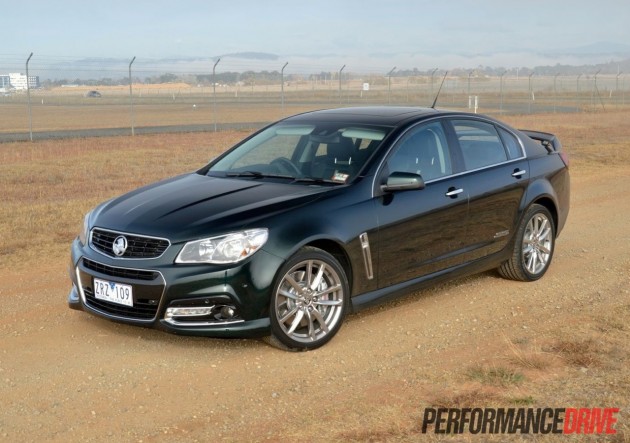
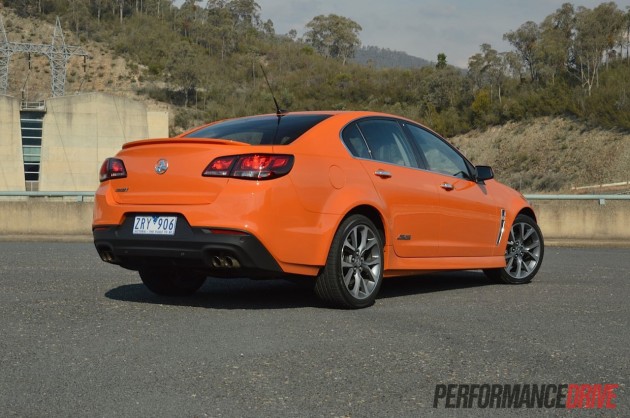
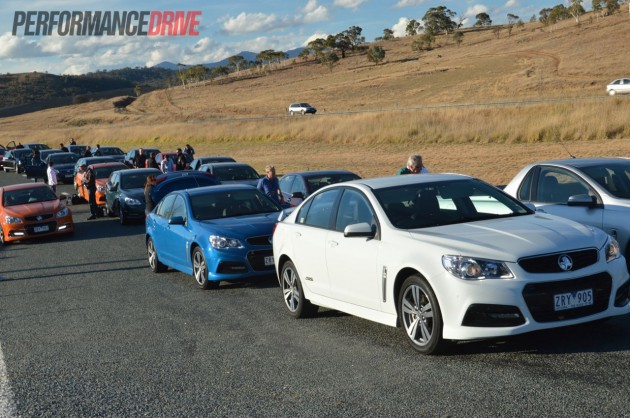
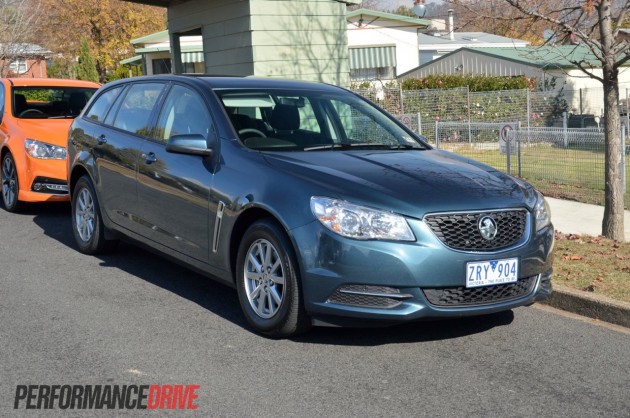
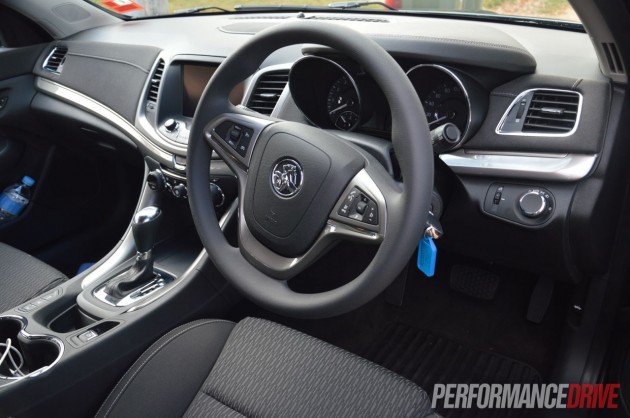
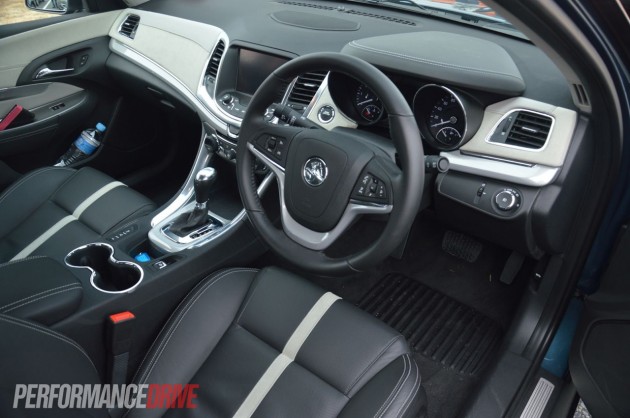
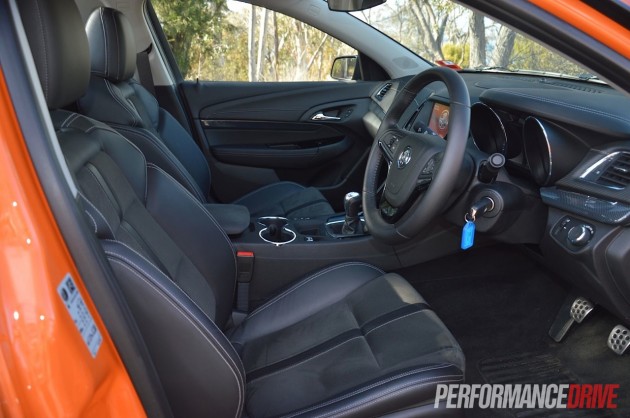
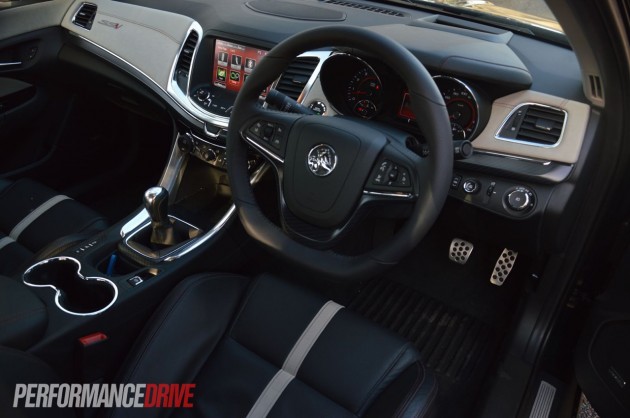
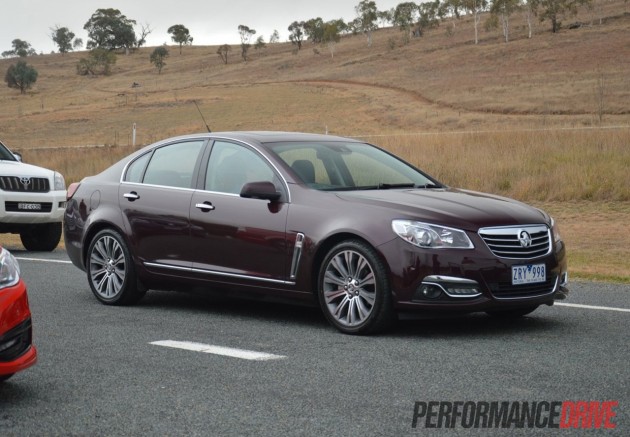
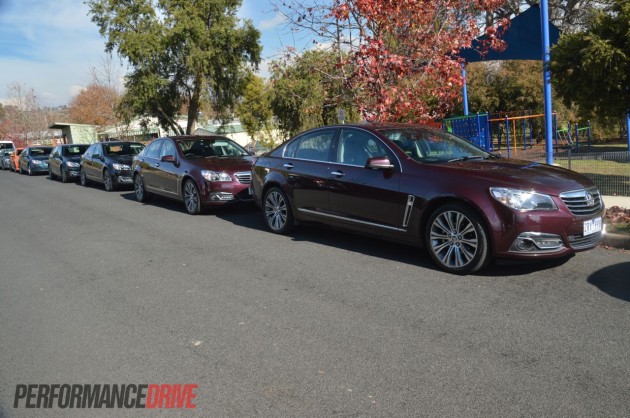
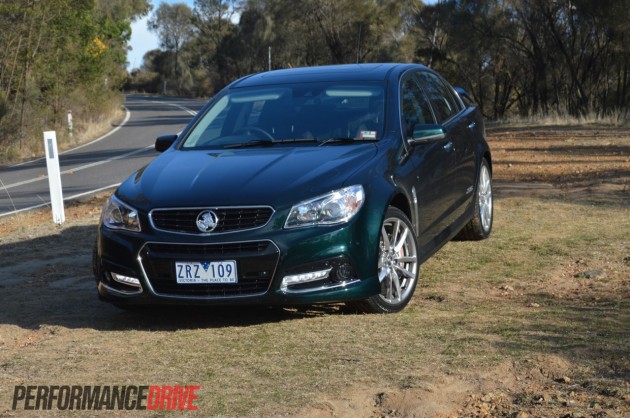
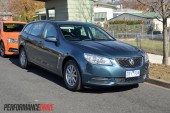

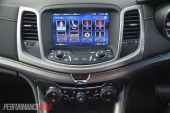

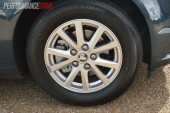
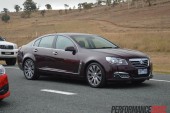

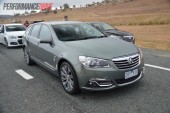
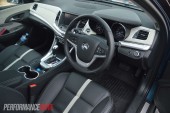
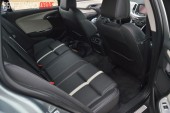
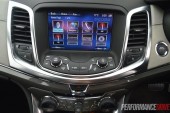
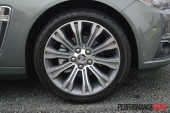
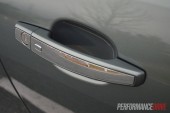
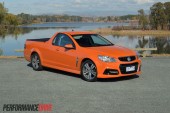
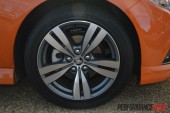
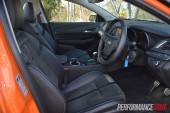

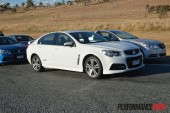
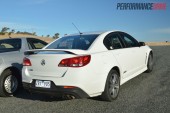
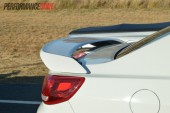
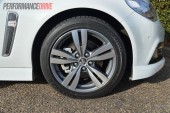
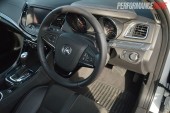
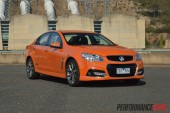
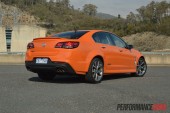
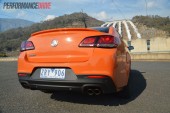
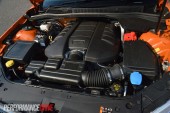


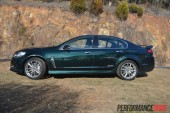
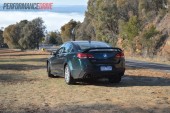
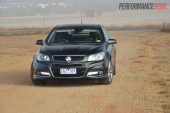
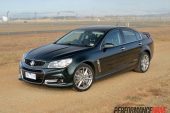
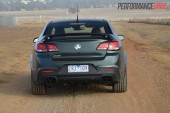

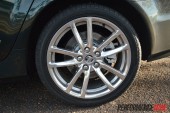
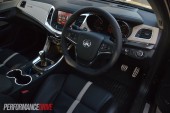
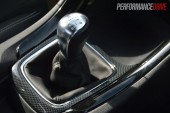
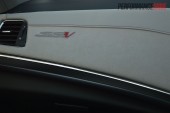
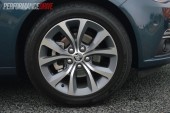

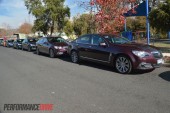
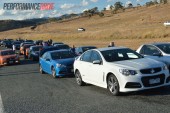
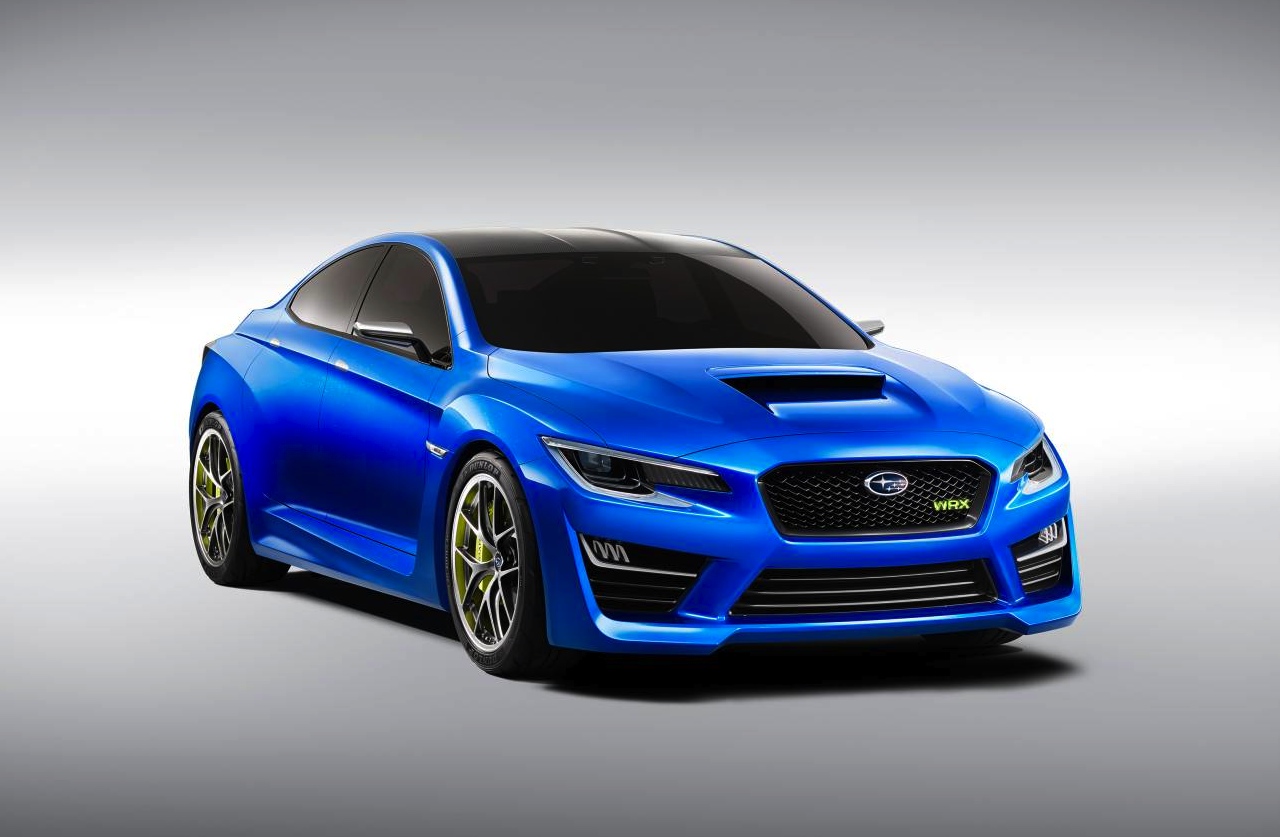
4.8 seconds is honestly a very respectable 0-100km/h time, and you reckon it’ll go even quicker! That time is faster than current HSV’s as well as AMG’s, RS Audi’s and M cars of a few years ago. This car has everything going for it, I just hope people realize how good it actually is.
I had written a long reply to this article but for some reason it didn’t go through so my short and simple reply is Who wrote this Holden or Performance. Why to get what I wanted I had to run all over to double check what I was reading due to many factors from wheels size to what car was being pushed as the Videos were all manual No look or should I say hear what the Auto sounded like and if the Auto sounds anything like the Ute which sounded Tinny No throat at all .
Hmmm, “■Idiada, Spain – Fuel economy testing, vehicle coast down”
Amazed that they would fess up to that, given that the ONLY reason car makers test there is to get the best possible fuel economy results. Otherwise they’d just test at Lang Lang!
Interesting, the 0-100 km sprint for the SS-V redline is 4.8 sec.
The GEN-f ,0-100 is same 4.8sec. With the upgrade to 340 kw.
So please get the times right.
Thanks.
Hi boviez,
The 0-100km/h tests in this review were undertaken
during the launch event in Canberra and on a different surface to where
we usually test vehicles; traction may have been slightly different
(both cars feature 275-wide tyres).
According to our timing though, in
this case, the Clubsport and SS V Redline are equal for 0-100km/h,
despite the 70kW power difference. More power doesn’t always directly
translate into quicker times.
In all cases, such tests are
provided simply as a guide and to give everyone a brief idea of the
performance. 0-100km/h doesn’t say much about cross-country or mid-range
capability, or even lap time potential at a circuit.
Hope this helps.
Hi
Thanks for the reply, i went and bought a white ssv redline. And its fast….
0-100 4.8 in a 1780kg car with a paltry 270kW. Did it fall off a cliff.